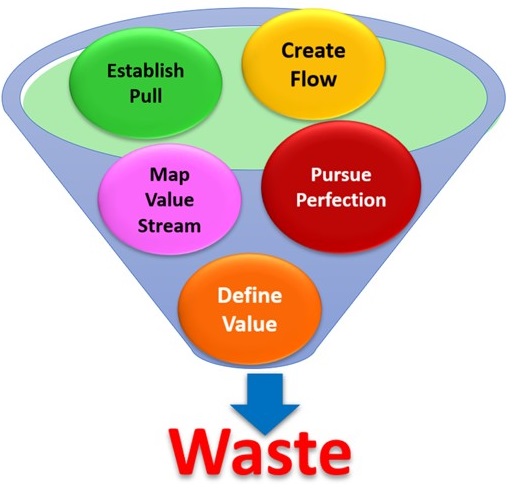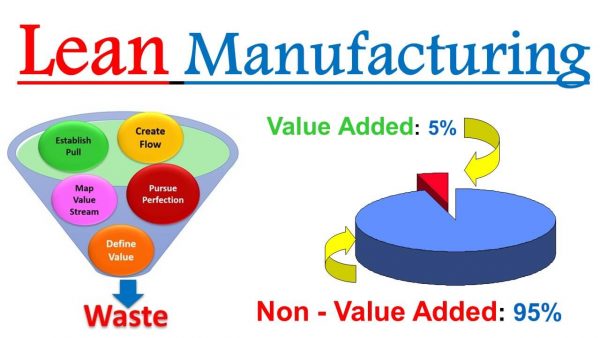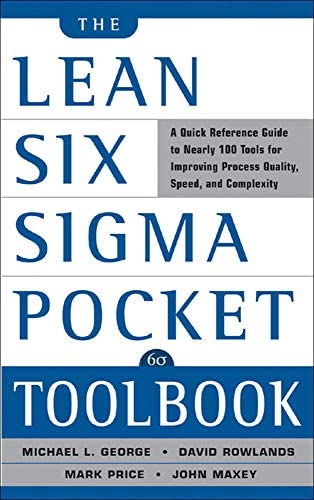Introduction to Lean Manufacturing
Lean Manufacturing is a systematic approach to minimizing waste within a manufacturing system while maximizing productivity. Originating from the Toyota Production System (TPS) in the mid-20th century, Lean has since been widely adopted across industries. The core philosophy of Lean is based on continuous improvement and respect for people, focusing on creating value for customers with fewer resources. By identifying and eliminating waste—whether in the form of overproduction, waiting time, transportation, or defects—companies can optimize efficiency, reduce costs, and improve product quality.
One of the fundamental aspects of Lean Manufacturing is its adaptability to different industries beyond traditional manufacturing, including healthcare, service, and software development. Organizations that implement Lean principles experience improved workflow, higher customer satisfaction, and increased profitability. In today’s fast-paced, competitive market, Lean Manufacturing provides businesses with a structured way to stay ahead while maintaining quality and efficiency.
What is Lean Manufacturing ?
This term “Lean Manufacturing” is not a new term and I bet you would have heard of this term definitely once in your lifetime. Lean has been around for three decades and to this day it remains one of the most talk about topic in the lean manufacturing industry.

W. Edwards Deming (Quality Guru)
Let’s begin with a famous quote from who once said, “It’s not necessary to change. Survival is not mandatory.”
It is not enough to do your best; you must know what to do, and then do your best.

Taiichi Ohno (Father of the Toyota Production System)
All we are doing is looking at the timeline, from the moment the customer gives us an order to the point we collect the cash. And we are reducing the timeline by reducing the non-value-added wastes.”

Shigeo Shingo:
The most dangerous kind of waste is the waste we do not recognize.
Lean Manufacturing is an operational excellence strategy that enables us change for the better tomorrow. Another common definition that we hear normally is that Lean is all about elimination of waste. The days when we hold massive amounts of inventory in the stores and takes months to deliver a product a to consumer no longer exists now.
🏆 𝐁𝐞𝐬𝐭 𝐁𝐨𝐨𝐤 ( 🎭 𝐌𝐮𝐬𝐭 𝐑𝐞𝐚𝐝 )
Click here to Buy from Amazon
Until 30 years ago there were monopolies everywhere and large companies took most of the advantages with their existing cost and added best profit to set the selling price of the product . Now if the consumer wants to buy the product, they had to pay the such a huge price. Such companies nowadays rarely exist and are replace by immense competition in the market. Consumer nowadays are demanding more and more functions and aesthetic features, better quality of products, faster availability and world class after sales service.
“No Process can never be declared perfect, therefore there is always room for improvement”
Lean concept is one of the best effective ways for manufacturing companies to become more productive, reduce their internal waste, and improve their process efficiency. The concepts of lean in minimizing waste have been implemented for almost sixty years in Japan. Although Lean manufacturing delivers significant results , it is not a quick fix program. Companies that plan to implement Lean have to be committed to it for long time.
Lean manufacturing caught the attention of many manufacturing companies, so much so that lean implementation in the world is a common and the knowledge and experience base is expanding rapidly.
“It’s not 100% necessary for you to change. Also it wouldn’t be entirely 100% true to say that Lean and Six Sigma will solve most of all of the world’s current problems or the recent global economic crisis but it has made it crystal clear that organizations must be willing to change and improve if they hope to prosper and in some cases, survive and be the World Class.
Lean Manufacturing helps in removing Non Value added activities which constitutes to 95%. Read my article on Value add vs Non value add activities

Another common definition is that Lean is all about elimination of waste. All the manufacturing process are classified as either Value added or Non value added . (See the image).
Value added (which accounts for 5%) are those for which consumer is willing to pay which will convert Raw material in to final finish good while non value added (which accounts for 95%) are those which are mostly necessary, take majority of time and resources but in return will not add any value to the final product.. E.g. Moving material from one place to another. storage of raw material or in process material, incoming or In-process or final inspection etc.
Typical wastes found in manufacturing environment are quite similar though products may differ in each factory. According to some estimate a much as 95% of activities do not add overall value to the final product and can be eliminated. Implementing Lean manufacturing involves streamlining the non- value added processes as much as possible.
How Toyota changed the Way we make things
Toyota is known for making the world’s best cars. It does it so well it became the first company to make more than 15 million cars per year. Its success is deeply rooted in a system which is now known as ‘Lean Manufacturing’.After the second World War, Japan was in deep economic crisis .Toyota was able to eliminate 8 deadly waste in Ford’s system, making smaller numbers of parts to be used in production and that too when it needed, allowing the company to operate on a very tight budget. Ohno created Kanban system which is a sign-based scheduling system.

Both Taiichi Ohno and Kiichiro Toyoda found that World’s top car companies were still employing early production techniques. They were operating at full scale to maximize efficiencies of scale. Ohno believed this approach discouraged workforces and machines from stopping to fix mistakes, leading to repeated errors. To counteract this, he implemented a system where every worker had access to a cord at their workstation, allowing them to halt production if they encountered a problem. The team would then investigate the issue and ensure it did not recur in the future. This system, known as Jidoka or “automation with a human touch,” became a cornerstone of the Toyota Production System (TPS).
How Lean Manufacturing differs from Traditional manufacturing ?
Manufacturing has evolved over centuries, shifting from craft-based production to mass manufacturing and, more recently, to lean manufacturing. While traditional manufacturing methods have long dominated industries, the introduction of lean principles has revolutionized production, making it more efficient, cost-effective, and quality-driven. This article explores the key differences between lean and traditional manufacturing, shedding light on their principles, processes, advantages, and challenges.

Customers today are demanding better quality of product, faster delivery, and lower costs like never before. And finally, the traditional methods of operating our companies simply don’t work anymore. The days of holding massive amounts of inventory and taking months to deliver a product a consumer wants in days are long gone.
🏆 𝐁𝐞𝐬𝐭 𝐁𝐨𝐨𝐤 ( 🎭 𝐌𝐮𝐬𝐭 𝐑𝐞𝐚𝐝 )
Click here to Buy from Amazon
Lean manufacturing has come up as one the best alternative to traditional mass production. Let’s look at each of these differences one by one.
| Traditional Manufacturing | Lean Manufacturing | |
| Scheduling system | Made to Stock ( Push) | Made to Order ( Pull) |
| Lead Time | Long lead time | Short lead time |
| Flexibility | Not flexible | Highly flexible |
| Demand/ Supply | Supply oriented | Demand oriented |
| COGS | Low COGS | High COGS |
| Layout | Functional | Product Flow |
| Waste | Huge volume of waste is generated | Minimal waste is generated |
1. Philosophical Approach
Traditional manufacturing focuses on maximizing production volume, often operating under the assumption that higher output leads to higher profits. It emphasizes economies of scale, where mass production reduces unit costs. However, this approach often results in overproduction, excessive inventory, and inefficiencies.
In contrast, lean manufacturing is rooted in the philosophy of eliminating waste while maximizing value. Inspired by the Toyota Production System (TPS), lean manufacturing focuses on producing only what is needed, when it is needed, and in the quantity required. This approach reduces waste, minimizes costs, and enhances flexibility, making it highly adaptive to market demands.
2. Production System: Push vs. Pull
Traditional manufacturing follows a push system, where products are made in large batches and pushed into the market based on forecasts. This often leads to excess inventory, storage costs, and potential obsolescence if demand does not match supply.
Lean manufacturing, on the other hand, operates on a pull system. Production is initiated based on actual customer demand rather than forecasts. This just-in-time (JIT) approach ensures that materials and products are replenished only when needed, reducing inventory costs and enhancing responsiveness to customer needs. For example, in the automotive industry, Toyota produces cars based on customer orders rather than stockpiling vehicles in warehouses.
3. Waste Management and Efficiency
Traditional manufacturing often results in high levels of waste, including excessive inventory, defective products, and inefficient processes. The primary focus is on maintaining high production rates, sometimes at the cost of quality and efficiency.
Lean manufacturing prioritizes the elimination of seven types of waste (Muda):
- Overproduction
- Waiting time
- Transportation inefficiencies
- Over-processing
- Excess inventory
- Unnecessary motion
- Defects
For instance, in a traditional factory, machines might run continuously to maximize production, leading to surplus stock that may never be sold. In a lean facility, production is closely monitored, and adjustments are made to prevent unnecessary output.
4. Role of Employees and Workplace Culture
In traditional manufacturing, decision-making is often top-down, with workers primarily following instructions without much input into the process. Employees perform specialized tasks repetitively, leading to a lack of engagement and ownership.
Lean manufacturing fosters a culture of continuous improvement (Kaizen), where employees at all levels are encouraged to identify inefficiencies and propose solutions. Cross-training and teamwork are emphasized, allowing workers to take on multiple roles and contribute to overall productivity. For example, in lean factories, workers may stop the production line if they notice a defect, ensuring quality control at every stage.
5. Quality Control and Defect Management
Traditional manufacturing often relies on final inspections to identify defects. If a product fails quality checks, it is either reworked or discarded, resulting in increased costs and delays.
Lean manufacturing integrates built-in quality (Jidoka), ensuring that quality control is embedded throughout the production process. Automated and manual checks occur at every step, preventing defects from moving down the line. This proactive approach significantly reduces rework, saving time and resources. For example, Toyota’s Andon system allows workers to signal issues immediately, preventing defective products from reaching the customer.
6. Inventory Management and Storage
A hallmark of traditional manufacturing is its reliance on bulk purchasing and large inventories to prevent production stoppages. While this ensures materials are always available, it also leads to high storage costs, wasted resources, and obsolescence.
Lean manufacturing follows the just-in-time (JIT) inventory system, where raw materials are delivered precisely when needed. This reduces storage costs, minimizes waste, and ensures efficient resource utilization. A prime example is Dell’s build-to-order model, where computers are assembled only after a customer places an order, reducing unnecessary stockpiling.
7. Equipment Utilization and Maintenance
In traditional manufacturing, machines are often kept running continuously to maximize output, leading to frequent breakdowns and downtime. Maintenance is usually reactive, addressing issues only after failures occur.
Lean manufacturing implements Total Productive Maintenance (TPM), emphasizing preventive maintenance to keep equipment in optimal condition. Regular maintenance schedules and employee involvement in basic upkeep ensure machines run efficiently with minimal downtime. For instance, many lean factories assign workers to monitor and maintain their equipment, reducing reliance on maintenance teams and improving overall productivity.
8. Cost Considerations and Profitability
Traditional manufacturing aims to lower unit costs by producing in bulk. However, excessive production often leads to increased operational costs, waste, and lost revenue from unsold products.
Lean manufacturing reduces costs by eliminating waste, optimizing resources, and improving process efficiency. While lean setups may require initial investments in training and system changes, the long-term benefits—such as lower inventory costs, reduced defects, and improved efficiency—result in higher profitability.
9. Adaptability and Market Responsiveness
Traditional manufacturing is less flexible, as it relies on long production cycles and large batches. This makes it challenging to adjust to market fluctuations and changing customer preferences.
Lean manufacturing, with its focus on demand-driven production, allows businesses to adapt quickly. Shorter lead times and continuous improvement practices enable manufacturers to introduce new products or changes faster. For example, smartphone manufacturers using lean principles can quickly adjust production schedules based on market demand and emerging trends.
10. Customer Satisfaction and Value Creation
Traditional manufacturing focuses on production efficiency rather than customer satisfaction. While it ensures high output, it does not necessarily prioritize delivering value to the customer.
Lean manufacturing is centered around value creation, ensuring that every process contributes to customer needs. By eliminating waste and improving quality, lean production enhances customer satisfaction. For instance, an airline implementing lean principles may streamline baggage handling and maintenance processes to ensure timely departures, improving passenger experience.
5 Lean Principles
Lean principles are designed to create a more effective workflow, leading to improved quality, efficiency, and customer satisfaction. The five principles, as previously mentioned, work together to eliminate waste and enhance value creation.

Lean generally follows five principles of Lean which are listed as below :
– Define specific value in the eyes of the customer. Identify this from customer’s view point.
– Identify the value stream Mapping and create map of what is value added and what is non value add.
– Create and Improve flow efficiently at the pull of the customer.
– Involve team members and then empower your employees.
– Meticulously use data for decision making purpose.
– Take a structured approach for continuous improvement.
Watch this YouTube video for more details
I hope this blog helped in understanding the basic concept in a simplified manner, watch out for more such stuff in the future.
📢📢 𝑺𝒐𝒄𝒊𝒂𝒍 𝑴𝒆𝒅𝒊𝒂 𝑳𝒊𝒏𝒌:
Thanks!!!
For questions please leave them in the comment box below and I’ll do my best to get back to those in a timely fashion. And remember to subscribe to Digital eLearning YouTube channel to have our latest videos sent to you while you sleep.
✍️ 𝓓𝓲𝓼𝓬𝓵𝓪𝓲𝓶𝓮𝓻: Copyright Disclaimer under section 107 of the Copyright Act of 1976, allowance is made for “fair use” for purposes such as criticism, comment, news reporting, teaching, scholarship, education and research. Fair use is a use permitted by copyright statute that might otherwise be infringing. The information contained in this video is just for educational and informational purposes only and does not have any intention to mislead or violate Google and YouTube community guidelines or policy. I respect and follow all terms & conditions of Google & YouTube.







